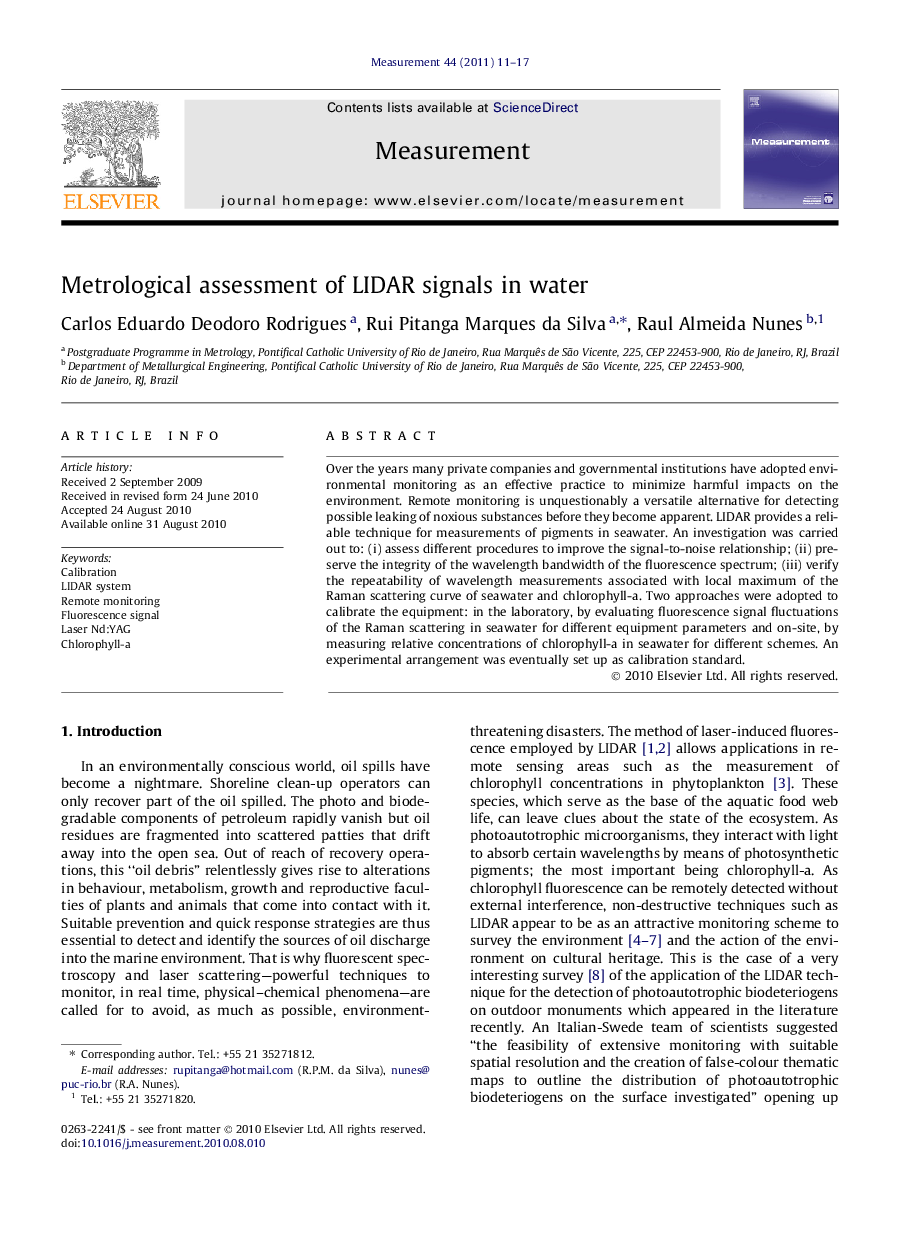| Article ID | Journal | Published Year | Pages | File Type |
|---|---|---|---|---|
| 730140 | Measurement | 2011 | 7 Pages |
Over the years many private companies and governmental institutions have adopted environmental monitoring as an effective practice to minimize harmful impacts on the environment. Remote monitoring is unquestionably a versatile alternative for detecting possible leaking of noxious substances before they become apparent. LIDAR provides a reliable technique for measurements of pigments in seawater. An investigation was carried out to: (i) assess different procedures to improve the signal-to-noise relationship; (ii) preserve the integrity of the wavelength bandwidth of the fluorescence spectrum; (iii) verify the repeatability of wavelength measurements associated with local maximum of the Raman scattering curve of seawater and chlorophyll-a. Two approaches were adopted to calibrate the equipment: in the laboratory, by evaluating fluorescence signal fluctuations of the Raman scattering in seawater for different equipment parameters and on-site, by measuring relative concentrations of chlorophyll-a in seawater for different schemes. An experimental arrangement was eventually set up as calibration standard.
